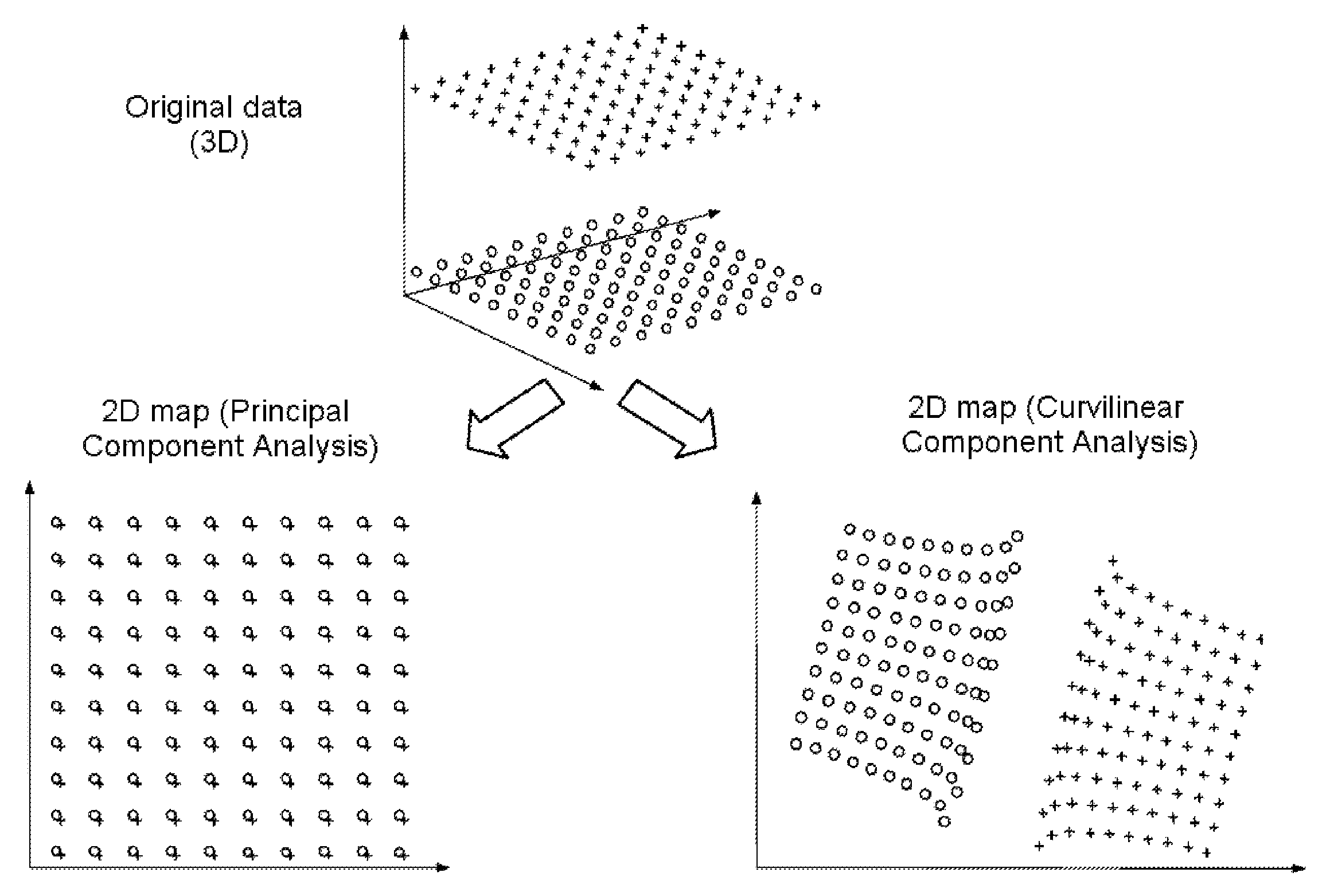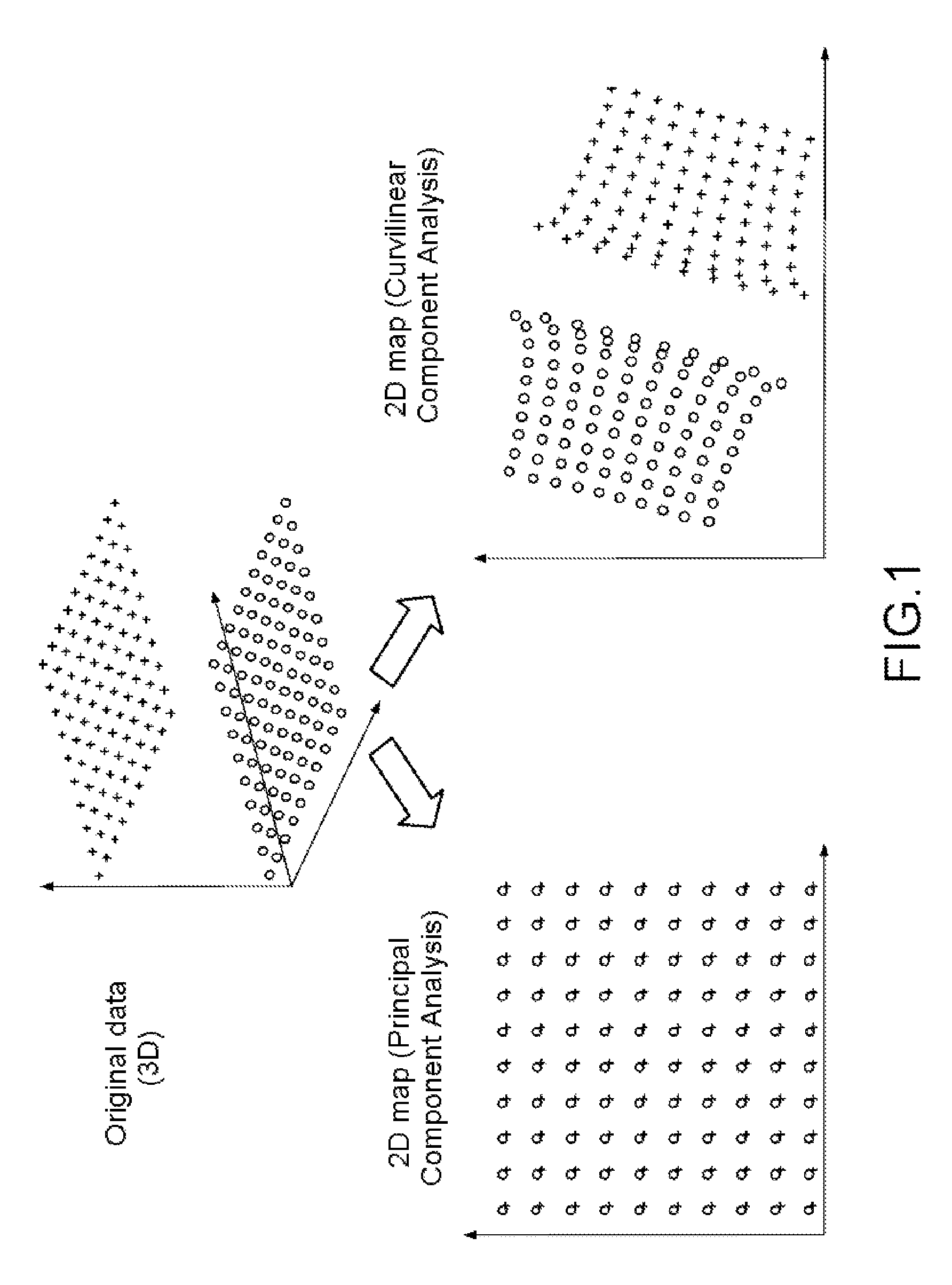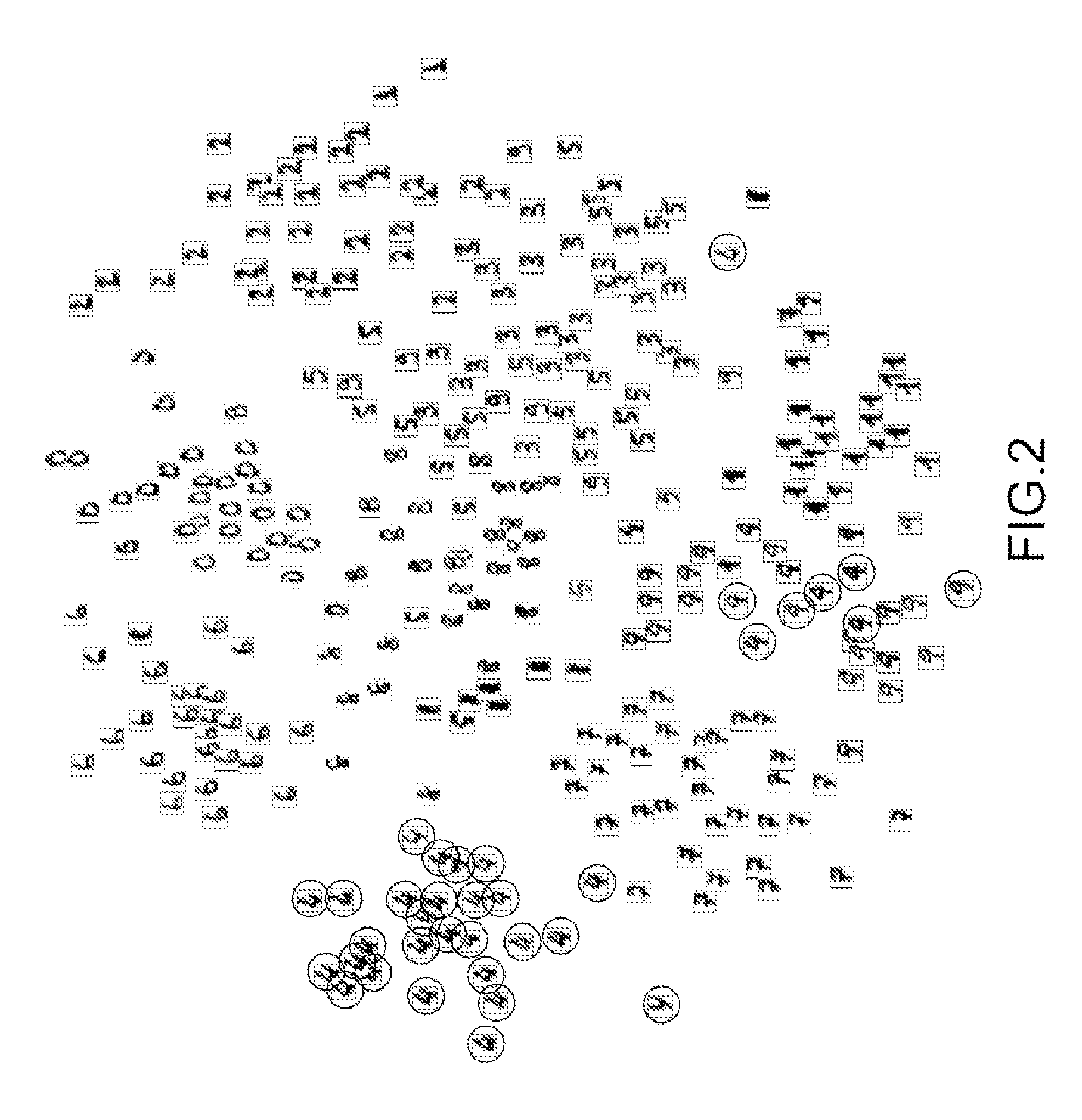Method and system for dimensionality reduction and evaluating the class of a test datum in a large-dimension data space
st datum technology, applied in the field of dimensionality reduction and evaluating the class of test datums in a large-dimension data space, can solve the problems of inability to fully adapt to the field of assisting decision-making, user is generally not expert in statistical learning and classification, and the decision rendered by the discriminator may be considered with too much confidence or skepticism, so as to facilitate the decision of the user, optimize the positioning of points, and preserve the spatial organization
- Summary
- Abstract
- Description
- Claims
- Application Information
AI Technical Summary
Benefits of technology
Problems solved by technology
Method used
Image
Examples
Embodiment Construction
[0048]FIG. 1 shows bottom left an example of false neighborhoods produced by Principal Component Analysis (PCA) and bottom right an example of tears produced by Curvilinear Component Analysis (CCA). One principle of the invention is to penalize false neighborhoods more or less depending on the circumstances, i.e. far data represented as near, and tears, i.e. close data represented as far away. The invention proposes to concentrate on the avoidance of tears within classes and false neighborhoods between classes. Thus when they exist intra-class continuity and class separation are given preference.
[0049]For the data set used to generate the map, the degree of conjoint membership between each data pair is known a priori, which is why this data set will be referred to as the “learning base”, as opposed to data added a posteriori, which will be referred to as “test data” and the class of which is generally not known. It should be noted that the set of classes does not necessarily form a ...
PUM
 Login to View More
Login to View More Abstract
Description
Claims
Application Information
 Login to View More
Login to View More - R&D
- Intellectual Property
- Life Sciences
- Materials
- Tech Scout
- Unparalleled Data Quality
- Higher Quality Content
- 60% Fewer Hallucinations
Browse by: Latest US Patents, China's latest patents, Technical Efficacy Thesaurus, Application Domain, Technology Topic, Popular Technical Reports.
© 2025 PatSnap. All rights reserved.Legal|Privacy policy|Modern Slavery Act Transparency Statement|Sitemap|About US| Contact US: help@patsnap.com



